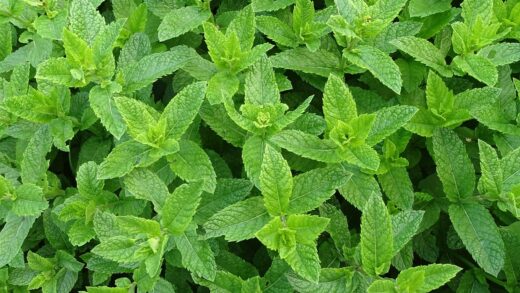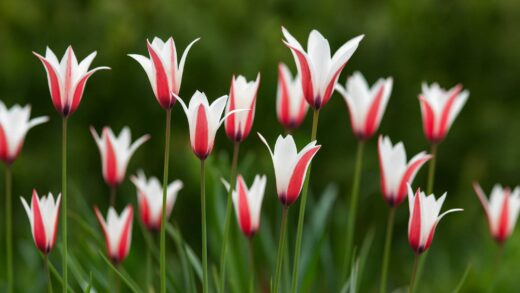Coleus are tender perennials, native to tropical climates, which means they cannot survive freezing temperatures. In regions with cold winters, they are often grown as annuals and discarded at the end of the season. However, for gardeners who have become attached to a particularly beautiful or unique cultivar, overwintering provides a method to preserve the plant for the following spring. This process involves either bringing the entire potted plant indoors or taking cuttings to grow as houseplants through the winter months. Successful overwintering requires a significant adjustment in care, shifting the focus from promoting vigorous growth to simply maintaining the plant’s health in the lower-light and drier conditions typical of an indoor environment.
The decision of how to overwinter a coleus—as a mature plant or as cuttings—depends on available space and the condition of the plant. Bringing a large, container-grown plant indoors can provide an instant, impactful houseplant, but it requires a significant amount of space in a location with adequate light. Taking cuttings is a more space-efficient method, as several small pots can be kept on a single windowsill. Cuttings also have the advantage of starting with fresh, vigorous growth, and they are less likely to bring outdoor pests indoors compared to a mature plant that has been outside all summer.
Timing is a critical factor for successful overwintering. The process should begin well before the first frost is expected. A sudden drop in temperature can shock or kill the plant, so it is best to bring plants or cuttings inside when nighttime temperatures consistently start to fall below 10°C (50°F). This gradual transition is less stressful for the plant. Before bringing any plant material indoors, it is imperative to inspect it thoroughly for any signs of pests like aphids, spider mites, or mealybugs, and treat any infestations found to prevent them from spreading to other houseplants.
Once inside, the overwintering coleus will enter a state of reduced growth or semi-dormancy due to the lower light levels and shorter day length. The primary goal of winter care is not to encourage new growth but to keep the plant alive and healthy until it can be moved back outdoors in the spring. This means a dramatic reduction in watering and a complete cessation of fertilizing. Providing the right environment and adjusting care routines are the keys to helping these vibrant plants survive the winter and be ready for another season of color.
The transition back outdoors in the spring must be handled just as carefully as the move indoors in the fall. Once the danger of frost has passed and nighttime temperatures are reliably above 10°C (50°F), the overwintered plants can begin to be moved back outside. This must be done gradually through a process called hardening off, where the plants are exposed to outdoor conditions for progressively longer periods over the course of a week or two. This acclimatizes them to the increased light intensity, temperature fluctuations, and air movement, preventing shock and sunburn.
More articles on this topic
Preparing plants for indoors
The preparation for bringing coleus indoors for the winter should start a couple of weeks before the planned move. If you intend to bring in a whole plant from a garden bed, it should be carefully dug up and potted into a container with fresh, sterile potting mix. Water it well and keep it in a shady spot outdoors for a week or two to allow it to recover from the transplant shock before moving it inside. For plants already in containers, this is a good opportunity to prune them back to a more manageable size and shape.
A thorough pest inspection is arguably the most crucial step in the preparation process. Examine the entire plant meticulously, paying close attention to the undersides of leaves, the leaf axils, and the stems. Look for any signs of aphids, spider mites, whiteflies, or mealybugs. It is highly recommended to treat the plant proactively, even if no pests are visible. A gentle but thorough spray with insecticidal soap or neem oil, covering all surfaces of the plant, can help to eliminate any unseen pests or their eggs, preventing a potential infestation from erupting indoors.
Pruning is another important preparatory step, especially for large, mature plants. Trimming the plant back by about one-third to one-half of its size makes it more compact and easier to manage indoors. This also helps to compensate for any root loss that occurred during digging and potting. Pruning encourages the plant to put its energy into maintaining its core structure rather than supporting extensive foliage in the low-light conditions of winter. The pruned stems can, of course, be used as cuttings to propagate new plants.
Before the final move inside, give the pot and the soil surface a good cleaning. Remove any fallen leaves or debris from the soil, as this can harbor pests and disease spores. Wiping down the outside of the pot removes any dirt or potential pest hitchhikers. This final act of sanitation helps to ensure that you are bringing a clean, healthy plant into your home environment, giving it the best possible start to its winter sojourn.
More articles on this topic
Overwintering mature plants
When overwintering a mature coleus plant, the primary challenge is providing it with enough light. The light intensity inside a home, even right next to a window, is significantly lower than outdoors. An east-facing window that provides gentle morning sun or a bright south-facing window is the best option. If the leaves start to lose their vibrant color or the stems become long and “leggy,” it is a clear sign that the plant is not receiving enough light. In such cases, supplementing with a full-spectrum grow light for 12-14 hours a day can make a significant difference in maintaining the plant’s health and color.
Watering practices must be adjusted dramatically for overwintering coleus. With reduced light and slower growth, the plant’s water needs decrease significantly. It is essential to allow the top few inches of the soil to dry out completely before watering. Overwatering is the most common cause of death for coleus during the winter, as it quickly leads to root rot in the cool, low-light conditions. When you do water, do so thoroughly, but then allow the excess to drain away completely, and do not let the pot sit in a saucer of water.
Humidity can be another challenge during the winter, as indoor heating systems create a very dry environment. Coleus, being tropical in origin, prefer higher humidity levels. The dry air can cause the leaf edges to turn brown and crispy and can also make the plant more susceptible to spider mites, which thrive in dry conditions. To increase humidity, you can group plants together, use a pebble tray (a tray filled with pebbles and water, with the pot sitting on top of the pebbles), or run a small humidifier in the room.
Fertilizing should be completely stopped during the overwintering period. The plant is in a resting phase and does not require the extra nutrients needed for active growth. Adding fertilizer to a dormant plant can lead to a buildup of mineral salts in the soil, which can damage the roots and stress the plant. Feeding can be resumed in the early spring, once you see signs of new, active growth, such as the emergence of fresh leaves, signaling that the plant is coming out of its dormancy.
Propagating and overwintering cuttings
Taking cuttings is an excellent and space-saving method for overwintering coleus. In late summer or early fall, select healthy, non-flowering stems from the parent plant. Use a clean, sharp blade to take cuttings that are 4-6 inches long, making the cut just below a leaf node. Prepare the cuttings by removing the leaves from the lower half of the stem. These cuttings can then be rooted in a jar of water or directly in a pot with a moist, sterile potting medium.
Once the cuttings have developed a healthy root system, which usually takes a few weeks, they should be planted in individual small pots (about 3-4 inches in diameter) using a high-quality potting mix. These small, young plants are much easier to manage indoors than a large, mature plant. They require less space and can be easily accommodated on a bright windowsill. Just like with mature plants, the key is to provide as much light as possible to encourage sturdy, compact growth.
The care for these newly rooted plants throughout the winter follows the same principles as for mature plants, but scaled down. Water only when the top layer of soil is dry to the touch, and do not fertilize until spring. Because they are young, actively growing plants (albeit slowly), they may need slightly more frequent watering than a fully dormant mature plant, but the risk of overwatering remains high, so careful monitoring is crucial. Pinching the tips of the young plants periodically throughout the winter will encourage branching and result in a full, bushy plant by the time spring arrives.
Come spring, these overwintered cuttings will be well-established, vigorous young plants ready to be planted outdoors after the last frost. They often establish more quickly in the garden than mature plants that have been overwintered, as they have not experienced the stress of dormancy in the same way. This method not only preserves your favorite varieties but also provides you with a fresh supply of new plants to create beautiful displays for the upcoming season, all from the material you started with the previous year.


















